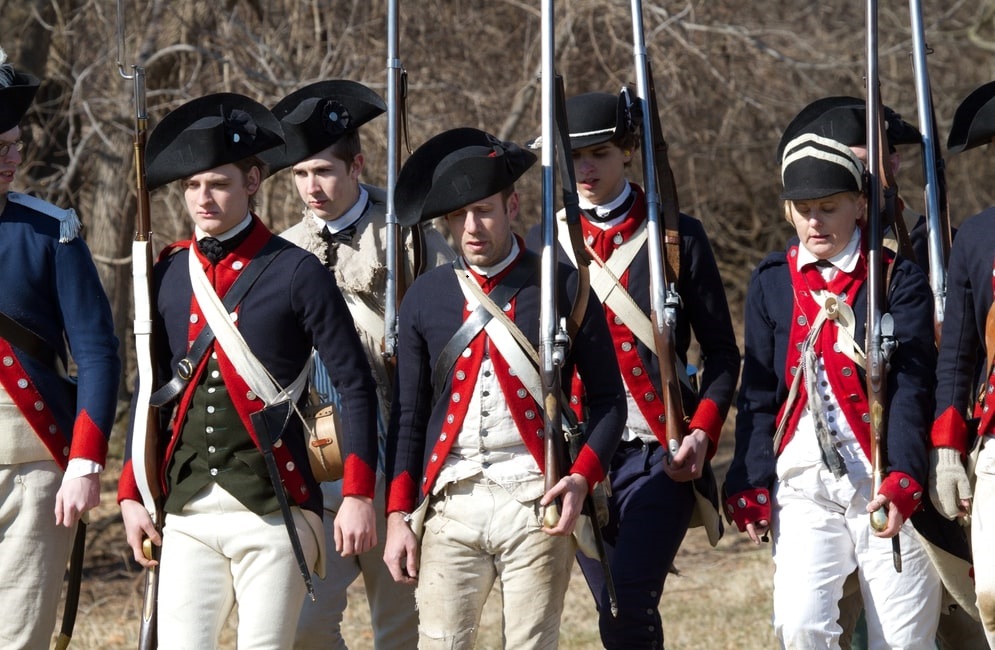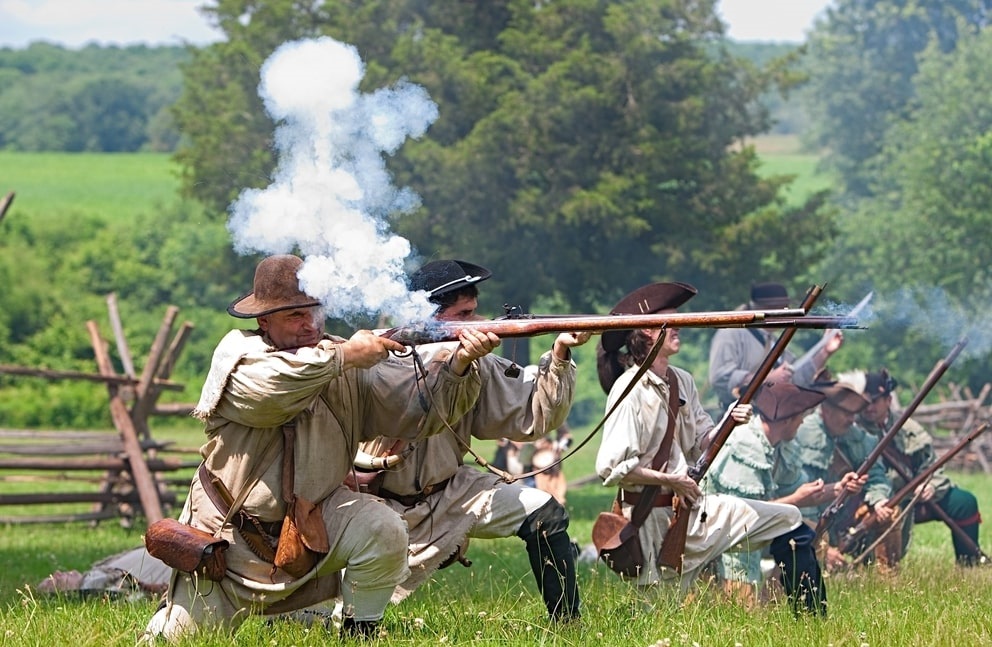Introduction: In this article – the second in a three-part series – Katie Rebecca Garner gives tips for researching your ancestor’s Revolutionary War pension. Katie specializes in U.S. research for family history, enjoys writing and researching, and is developing curricula for teaching children genealogy.
In my last article, we learned about Revolutionary War pension acts and what our ancestors had to do to get a pension. See: Genealogy Tip: Your Ancestor’s Revolutionary War Pension (part 1). In part 2, we will continue by looking at what we can find in our ancestors’ pension records.

Photo credit: https://depositphotos.com/home.html
Revolutionary War Service
The pension record is a good place to learn details of the veteran’s service. This was the case with Jacob Long, whose pension describes what he did during the war. It also provides information helpful in differentiating him from the other Jacob Longs in Lancaster County at that time.
Contemporary survivors mentioned who served with Jacob Long are Thomas Kautz/Karts and George Leonard. The pension record includes statements by them about their service together. These men were part of Jacob Long’s FAN (Friends, Associates, Neighbors) club, so it should be noted if they appear in other records of Jacob Long. Looking up records of these men can also reveal additional information about Jacob Long.
Aside from pension records, other places to learn details of a soldier’s service in the Revolutionary War include service records, regimental histories, battle histories, and state and local histories.

Photo credit: https://depositphotos.com/home.html
Contents of Pension Records
Pension numbers are often preceded by a letter: S for survivor (soldier); W for widow; or R for rejected. A survivor’s pension includes the soldier’s name and age, birth information, his residence at the time of his application and at the time of his enlistment. The soldier would give a deposition of his service including the unit he served in and battles he participated in. Included in the pension are affidavits of soldiers who served with the survivor, which is helpful for FAN club research as noted earlier.
The widow’s pension includes the name and age of the widow, residence at time of application, date and place of marriage, and the husband’s death information. This often includes the widow’s maiden name, which is essential for tracing her line. In some cases, the pension is the only existing documentation of the marriage. The pension also includes a deposition by the widow and surviving family members, and affidavits from those who served with the deceased soldier.
Mary Long’s pension indicates that she and Jacob Long were married on 22 May 1785 at the German Reformed Congregation in Lancaster City. Her maiden name was Mary Grinler. Knowing the church they were married at is valuable for searching church records for their family, including baptism records of their children. Jacob Long died on 26 December 1842. Knowing this date gives a time frame to search for probate records and other death records for him. Researching the history of the German Reformed Church in Pennsylvania can give further clues to research.
Additionally, Mary and Jacob’s birthyears can be learned from their pension records. Jacob was age 73 in 1832, and the record states he was born in 1759. Mary Long was age 91 in 1855, calculating her birth year to 1764. This provides a useful clue to researching their early lives and tracing their families back. This information was also helpful in identifying them in early census records, which will be discussed in part 3 of this three-part series.
The pension payout is reflected in pension ledgers. Every six months, the pensioner had to go to the pension office to collect their payment, resulting in a record taken every six months giving the ancestor’s residency. If the ancestor moved, they would have requested their pension be paid out at the office of their new residence. This makes the pension ledger a very precise way to see migration patterns of an ancestor.
Rejected pension applications may include extra information due to the applicant trying to prove they were worthy of a pension. A soldier or his widow might try to prove his service and tell his whole military story in the process. In the case of a widow’s pension, she might try to demonstrate her marriage or his death. Rejected pensions often leave extra paper trails, to the bane of the ancestor’s existence and to the delight of the genealogist researching said ancestor.
With the information contained in your ancestor’s pension, you can learn a lot about them, and gain clues for additional research. This will be further explored in the third and final part in this series.
Explore over 330 years of newspapers and historical records in GenealogyBank. Discover your family story! Start a 7-Day Free Trial
Note on the header image: “Washington Crossing the Delaware” by Emanuel Leutze, 1851. Credit: The Metropolitan Museum of Art; Wikimedia Commons.
Related Article:
Resources:
- https://www.familysearch.org/rootstech/session/1-find-and-use-revolutionary-war-records
- https://www.familysearch.org/rootstech/session/2-finding-your-ancestor-in-pension-and-bounty-land-files
- https://familytreewebinars.com/webinar/american-revolution-genealogy/?category=records&subcategory=military&subsubcategory=revolutionarywar&sortby=newest
- https://familytreewebinars.com/webinar/revolutionary-war-series-4-of-5-records-created-by-the-revolutionary-war-after-the-war-pensions/?category=records&subcategory=military&subsubcategory=revolutionarywar
- Jacob Long pension file, pension no. 3434, U.S. Revolutionary War, NARA publication M804, record group 15, roll 1580; digital image, fold3 (https://fold3.com: accessed 8 November 2022), 37 pages.
